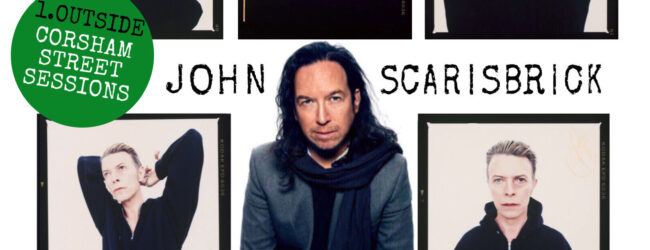
Once upon a time there was a little young girl who lost her life in Oxford Town. Adler, the detective, tried to make everything clearer… but he found on his way many strange and creepy characters: Ramona, Mr. Touchshriek, Leon… and above all the Minotaur. A fantastic death abyss in which it was very easy to mistake a weird artist for the villain. Was it art? This was not a fairy tale, but a David Bowie nightmare without a happy ending. Well, without an ending at all, actually. A young Swedish man from Stockholm helped David to make real a story which still fascinates many fans. A camera and a wild imagination had been enough. After 25 years the photographer John Scarisbrick talks about his career and reveals many interesting details of his collaboration with the Duke. Nearby some stunning pictures kept hidden for too long. In a certain way, the story continues…
——————————————————————————————————–
Mr. Scarisbrick, in your youth you moved from Stockholm to the USA. What were you looking for? At that time was photography already a interest for you or maybe only a blurred hope?
I had already been an assistant in Stockholm for a few years and the photographer I worked with decided – it was around 1990 – to move to NYC. I was 23 years old. He was a bright star in that field and within a year we did all that the fashion/portrait jobs the world could possibly offer. It was an intense but very educational time. My goal was to be the best assistant in the world, not the person standing next and thinking I could do this better.
You had a considerable success on two sides of the planet – America and Europe, worked in the world of fashion, founded Intermission Magazine, portrayed several celebrities… what do you think really helped you to obtain all these things?
Curiosity, and longing to see what requires to do a photograph or a series of them, to be able to move forward with what photography is and how it can be used. With celebrities I was good to make things happen during a shoot, giving something extra, and needing to move forward. I founded Intermission Magazine in 2009 after I had been back in Sweden for 6 years, but really longed back to NYC. A dear friend told me that I needed to have something to offer if I was planning to come back. I really felt that a magazine was the right way! It did get me back with my old friends and at the same time this changed the image of me: people saw me as an editor and publisher, not as the photographer they once saw me, even if I was still shooting a lot and for the magazine. I think I lost some of my own curiosity in exchange of becoming an editor, which for me was natural. I’m very good with people and I can understand the creative mind. But I’m not so sure how great this was for me as photographer.
As a European I’m more sensitive, and more local in my way of seeing things. In the USA I felt I just needed to have a strong point of view, the mix of how the American works and my own heritage definitely had an importance. I’m more humble and less loud, but I was loud in my images so that was an advantage in NYC. In Sweden people would have shut me down. But, again, I’m not the typical Swedish person.
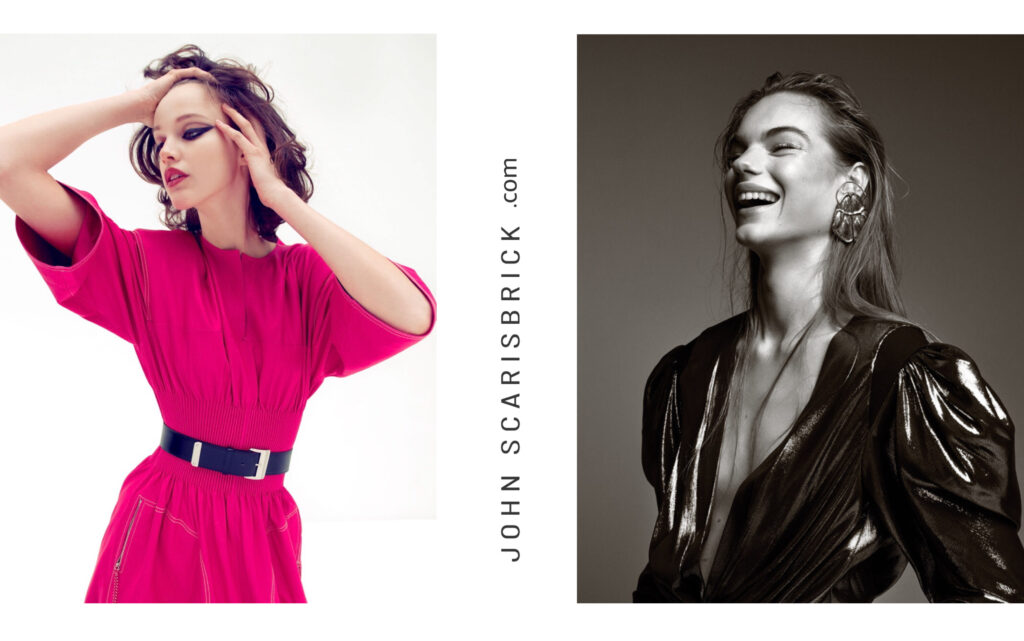
Have you ever considered to move and work in a different area of photography?
I love photography as a medium and as a way to communicate ideas and thoughts. For me it’s a huge chance in many ways and I love to be inspired, for my own ideas and projects in photography. This medium has been in our lives for more than a century now, and from the news, to advertising, portraiture, documentation, fashion, in personal aspects and so on. I’m a photographer who is trying to make my subjective filter when I do things… so, to answer your question, I already do.
You once affirmed that in your early years as a photographer assistant you had nothing, no money and no comprehension by the others.
Coming out of 8 years assisting at top-level photographers I probably thought I start at the level of the people I had worked with. That did not happen. I really needed my own voice before that could happen. I also decided to not assist ever again, that was my only income, so in retrospect maybe it was dumb, but it pushed me to find my own language of photography faster.
You also added to not have met any encouragements. We could define you a real outsider…
Ha ha hell yeah, I don’t know how to define it in any other ways.
Where did you find the strength to go on?
This is a great question… probably not ever becoming a failure and a boring person.
Imagine to have the chance to send a message to the younger version of yourself, about thirty years ago. What would you say to him?
That’s interesting. I’m not sure, maybe I would say: take it easy, think longterm and take a course in business and spend your well earned money smart. And protect your art and integrity, but I’m not sure if this younger version of me have gotten that message, he would follow it.
How much stuff did you know at that time in Bowie’s discography?
Not so much as I know today, but I was familiar with the big songs, of course.
I’ve followed David Bowie since the beginning of the Nineties, everything about his music and the contents and the expression of his art. And in particular what concerns photography. To be honest I have to admit I never noticed your name in the notes of 1.Outside, but I liked the images that appeared on the booklet of the album. When the latest book ICON, published by Iconic Images (in collaboration with ACC Art Books), you became for me the most enjoyable surprise from that marvellous collection of photographers.

Wow… thank you! Early on I was recognised quite a lot. For me, I did what I felt I had to do, but I was not sure I liked to be recognised by people. To be honest I saw myself as an artist during the day and as a more chilled and sophisticated European man during the night.
But as soon as I had a camera in my hand I just photographed what I felt and saw, turned up the music so loud I could go in to trance and see clearly what I had in front of me. I did not choose this, it chose me.
My schooling was so technical and nerdy. I really knew a little about photography and it was hard for me to mix that with finding my own images, when I totally did all of it the opposite way and tried to forget technique and just looking for a feeling I found it after a while.
I read early on about Robert Frank’s life, I loved his pictures: he had a long career before the tragedy in his life, in the 70s. I was young, I had to live long before I could find my own language, and believe in that.
Why didn’t you ‘reclaim’ your collaboration with David for 25 years?
Simply because I was not that happy with the result appeared on the album. I felt I needed to move forward. I was thinking back and forth these couldn’t be my strongest images forever and I needed to do more. Maybe that was it, but today I’m so happy I did them, I can have an distance and just enjoy be part of David’s world, even in a small way.
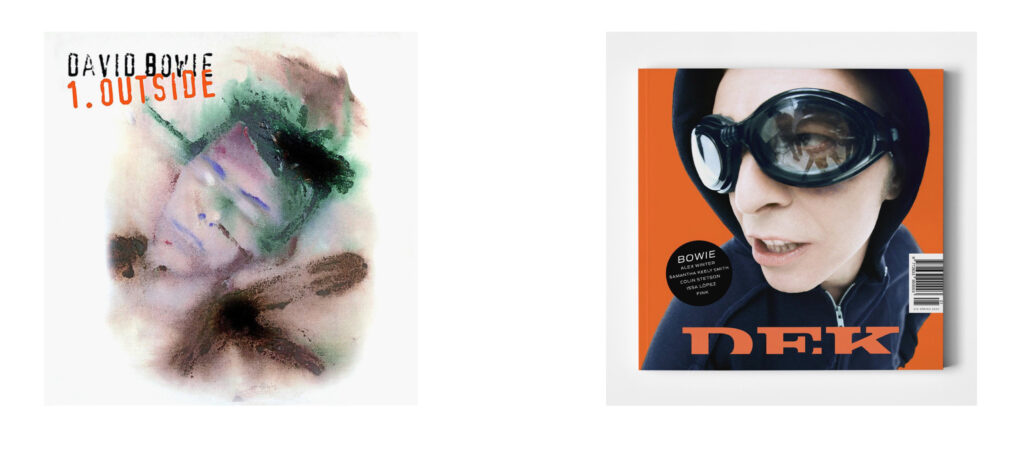
A few, and alternative images, firstly appeared in the first issue of a new English magazine called DEK, published last spring. There is a very detailed report of your photo session, but as I think it was read only by a few people, I would like to retrace some interesting aspects. How much are you proud of your past work?
I’m proud of it because when I show these images to others, people get happy and are very impressed. I like this a lot, to move people with my vision. I never tried to be funny with my images but I know they can be humorous and entertaining, and now I can go a long with that.
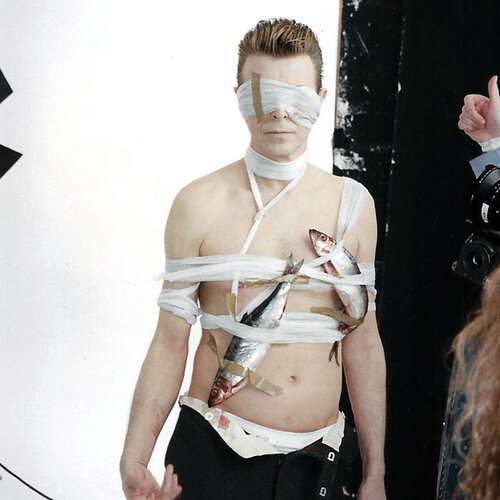
You explained how you succeeded to work with David. Really funny the story of the phone call. Quite unbelievable to imagine, but this was his way to approach, first hand, his new potential collaborators. Dozens of them have told a similar event. Your first reaction when you were with him in that hotel in London?
I thought he was amazing, so calm and cool, he was sitting on the sofa in his hotel room, bare feet, legs crossed, he was soft spoken and a beautiful man. I was thinking that this is the first person I had met in my life who did not touch the ground… 2 feet above the ground, that was cool. I felt the rules of the world did not apply to him. I had met famous people before, but most of them were deadly and pretty regular. They did not feel in that way as David. A very surreal feeling.
It’s quite interesting for fans and researchers the time references of the collaboration: the last days of April 1995, but the album would be released five months later. What exactly you talked about in your first meeting?
Well, David had written a story and we were illustrating the characters. Jennifer Elster was the head stylist of the shoot, she was totally bonkers and fun. She was dark in a different way from me, but if you let her do her thing, things would come together.
She dressed Bowie and I got inspired of what was in front of me and with my camera. I directed what we had agreed on and what else I got inspired by. From time to time I forgot to have this icon in front of me and if Bowie fans had seen what I was doing they would probably lynch me for treating him like I did. I think I was shocked of the result, and I was thinking this was not the best way to end up in David’s history, so it could also been the reason I did not show them around.
Your statement from the book Icon reveals a certain rough and punk – and energetic – attitude in your way to approach the photo session with David. Do you think he appreciated to have a photographer like a ‘rebel’? Or was he a bit surprised? Was that – do you think – has maybe attracted him from you?
Like I say in the text of the book Icon, he must had seen that, he was super curious on people and he was wondering who are this crazy kids from NYC, and probably he enjoyed to work with us and in the project.
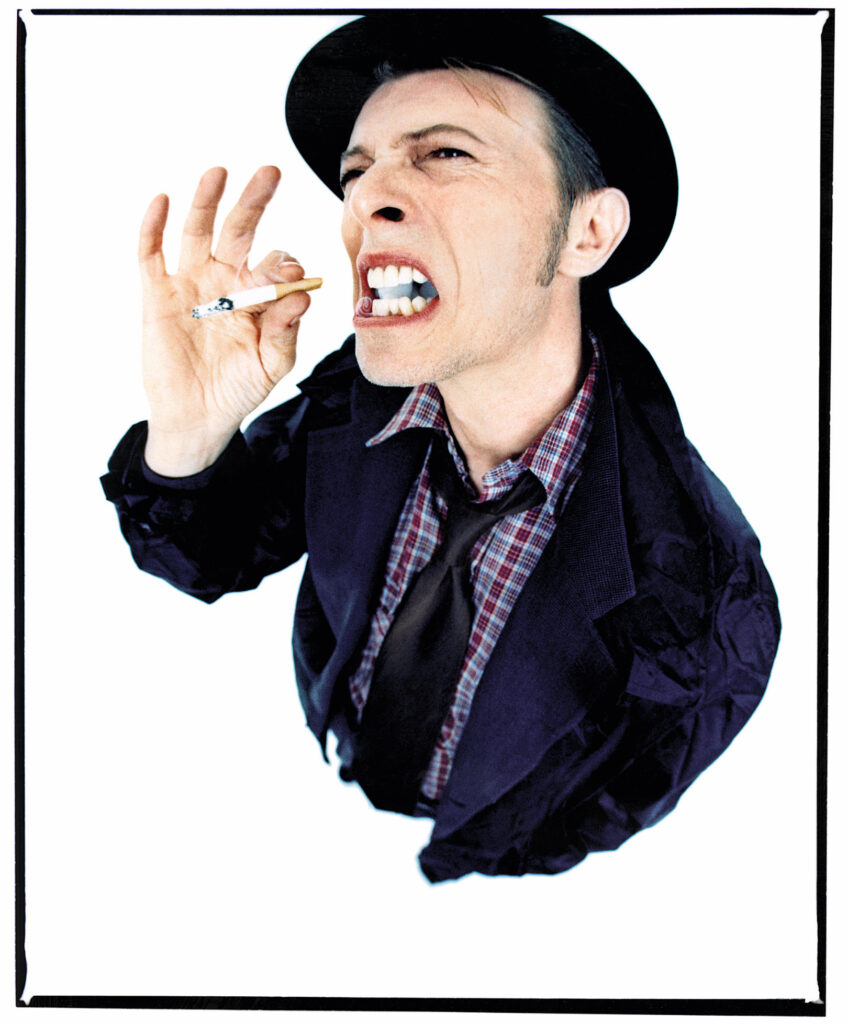
I find very interesting what you said about the location of the session. Despite the defiant attitude you took on, you affirmed that the sleazy studio in Corsham Street was already the location of David’s story, in your mind. It makes me think Bowie had influenced enough your imagination before to start the work. Am I wrong?
It could be, I’m not sure who chose the studio. I know I used it afterwards for a few years. Often when I shoot back then, I needed a reason to take the photograph. I still do, and if there’s a story in my head I love to imagine a place and what it was happening there. Then I shoot the behaviour of what I could go on there but on a white seamless, to isolate the actual behaviour. My first story was like that, for the fashion magazine Harpers Bazaar: a catfight over shoes at a sale at Barney’s in NYC and with my wide angle lens, to get close to the products and at the same time to see what it was going on. So it was the same thing here: everybody of the story was in the same location but I just shoot who they were and what it was going on with them, not so sure if we had used different locations. It would had been as strong imagery.
I supposed it was quite an unusual and bizarre photo session. It was the very first time Bowie assumed simultaneously the roles of different characters from a complex and very uncommon plot… I couldn’t understand if you really read the Diary of Nathan Adler before you entered the studio…
I think I did. He faxed the story to me in NYC and he asked to please read it carefully and let him know what I thought it about and what it could possible to to do with it.

Didn’t you think that it was simply a crazy project? A rockstar from the Seventies who still had to revalue his talent and who literally assumed the roles of a 14 years old girl to be murdered, an old shopkeeper, a middle-aged woman with a questionable appearance, the Acolyte… everything settled in the future. Or maybe this was nearer to your mood more than you could admit at that time?
Like I said this was actually closer to me then I think it was for him, but none of us understood that then. We said we better go nuts before anyone regrets having us there and sending us home. When we finished Jennifer and I said each other we could not believe we did this and got paid!
What do you think, in musical terms of Outside? Some fans (me too!) truly love it like no other else in Bowie’s discography…
What can I say, of course I love the album…
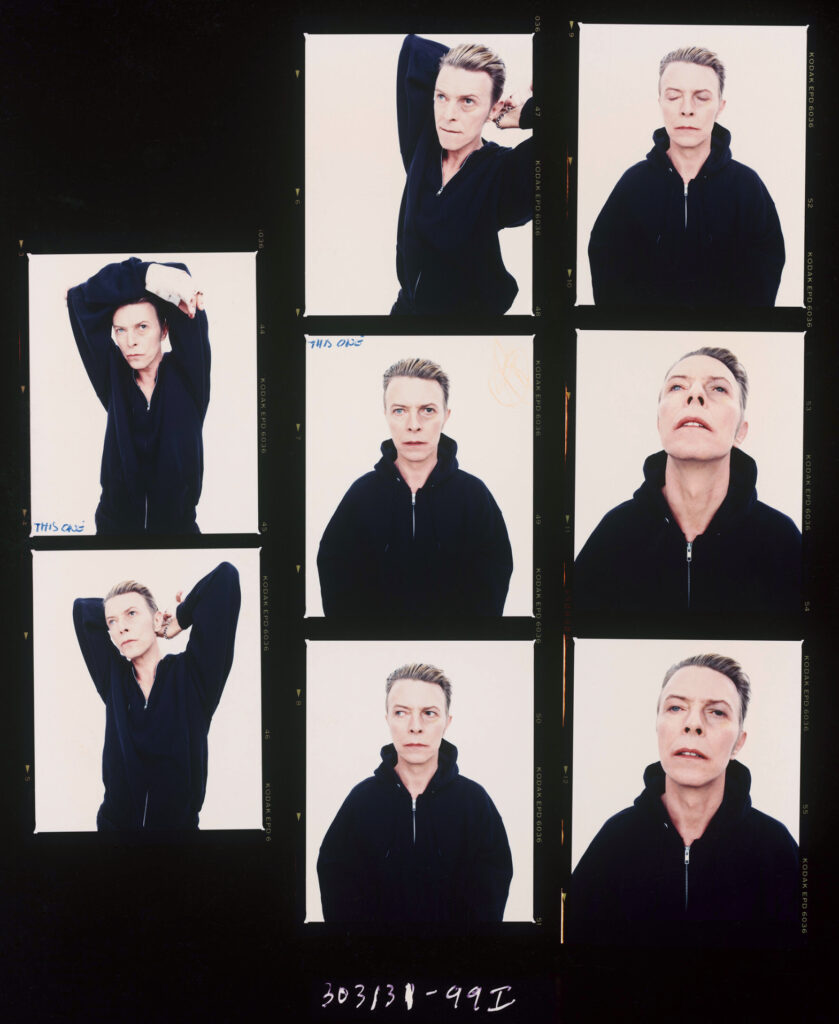
On the Net some years ago appeared the image of a Polaroid where David, the stylist Jennifer Elster and you, posed together in front of a camera. Please give me your version of the story…
The polaroid is getting famous, I found it at my sister’s house recently. I framed it and gave it back as a present to her. It was published in a Swedish newspaper this January. I don’t remember who it took it but I really wanted a memory from the shoot to give to my sister Ann. It’s me in the back, a cool Bowie inboxed in the middle and the stylist Jennifer Elster. An amazing stylist and an amazing person, too. Bowie signed it to Ann, it is great to still have it today!
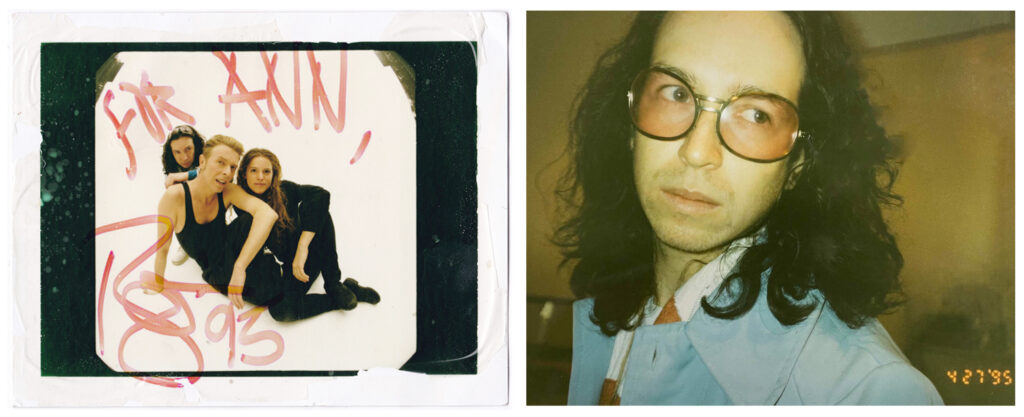
The ski googles you were wearing… are the same worn by David in his version of Leon Blank?
Absolutely yes.
How was to collaborate with Davide De Angelis? Any different point of view during the shoot? Your photos were heavily modified: coloured, altered and overwhelmed. Why?
Davide was great. He had a wonderful energy and we really had great respect for each other. Later he went on about some post production “its gonna be sick” images. At that at the time when I saw the result I maybe was not in love with it. But that happens in our job and with the layout. David and the label chose to use my pics in a different way. It was their business.
One particular photo stood probably unchanged, utilised for the cover of the inside booklet which contains the narration. A magnificent black and white portrait of David as Nathan Adler: an intense expression, a crooked stance. Do you remember anything about it?
Sadly not, I was so focused on the shoot that I don’t remember details for that character.

Only in one of limited editions of Icon has included a separate lithography with a sequence of 8 photos you took of David. He’s dressed with a black sweater, a shiner and looking a bit dazed.
Love to see it now. It is Leon Blank, a bit roughed up. I did more handsome portraits there before David told me his character and how he wanted me to push a bit more. I tried to give the pages to some life. The first layout of the book shown to me was with less pages and I asked if they had really looked at them. Then they did it and decided the contact sheet will get their own spread. I was really happy about!
In the special deluxe edition I picked another contact sheet of Leon Blank for the 25 of the 8×10 signed prints that came in the box. That is the one I love in particular.
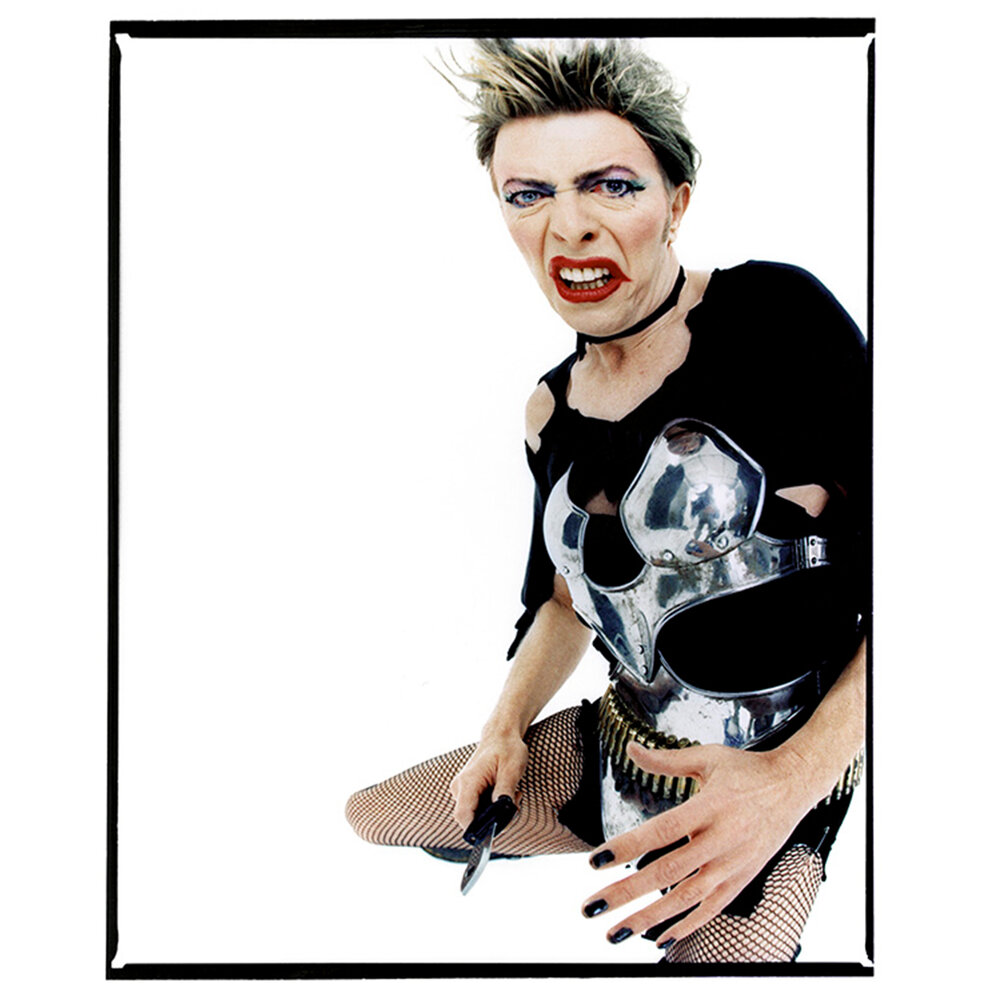
What were your/his intentions behind these shots?
You should ask David! No, seriously… it was part of how David and Jennifer wanted Leon to be seen. It’s a blue black hoody, it was how they saw him, don’t think there was any other thoughts. Jennifer is a New Yorker and it’s a urban look, I suppose.
Nowadays you are very involved into shooting with models and everything else concerning fashion. How difficult is to not be a trivial and predictable photographer in this particular area?
If you work in the field of fashion it is very serious and it’s so much about small details and how and why you do it. For me casting is pretty much the biggest part. I love characters so if I dress a cool character that inspirers me in one way or another that is my image. In fashion the main character is the clothes, every thing else is to give a story of that. If fashion and code of clothes is not for you, it’s totally flat. There’s only a few of artists completely good at, as Helmut Newton. The best photographers are even great artists in the field of fashion.
Music has always been my inspiration for clothes, beauty and portraits then you ask who is this model, then like in David’s story you tell who she is, then you can do your series of images and understand what you are doing.
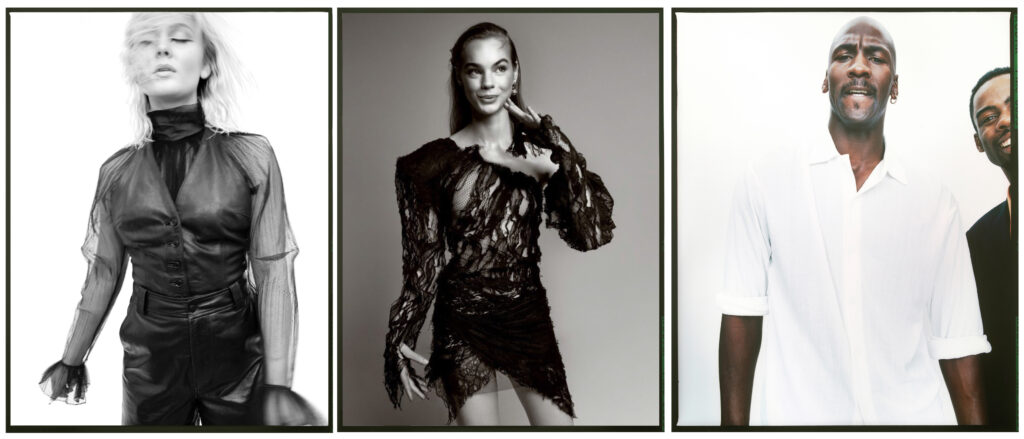
Observing your shots I see some original and uncommon poses of the subjects portrayed. Have you the possibility to choose the models for your shoots? What do you usually look for in them?
Yes. I’m very involved and I need to like how there are and get inspired then if it’s advising, and fashion story or just series of portraits they are my starting point.
I read a recent interview with Fiona Apple, in occasion of her musical comeback. She recalls a particular shoot she did with you for The Face magazine. She lamented that once the success involved consequences that were totally out of her control. She isn’t angry or resentful toward you, but her image had been overwhelmed: no one told her about the mascara all around her eyes and her hair were digitally cut in post-production. In spite of everything, I personally think it’s a great shot. Do you remember it?
Hahaha yes, that’s the first time I hear this. Fiona was a New Yorker and she grew up with an ex girlfriend of mine, so I knew little about her before. She was seen as the next emotional music artist and she was going very far, people said.
At shoots with celebrities I think I was handling them well, that’s because I got to do plenty of them… I also gave them very lively images.
Fiona hated being photographed to the point everybody in the team said: “Why do you just leave and get out of this misery?” I wanted her to feel she was there for her and that we were with her, not against her. I’m not sure if she cried a few times because it really intruded on her as an artist. She used to say over and over again: “I’m not a model, don’t use me as one them”.
I recall that the hair and make up team wanted to help me getting great images, and I really needed their contribution. We could just smoothy change her look on set and I just kept on shooting. At the end we obtained something very good. They knew my work with David Bowie and they wanted some iconic images like those but… about Fiona, she said we smeared out her make up. I loved it, and they bent her hair so it looked like a messed up page.
Suddenly she looked cool and amazing, I think they fixed her hair quickly back, so she never saw what it had been done to her. There was no post production on the image, the hair looked like it had been cut of very roughly and her look was like a little messed up doll.
I’m very sorry that it has been a trauma for her but it was not our purpose at all. We were artists and this happened before everybody required picture approvals.
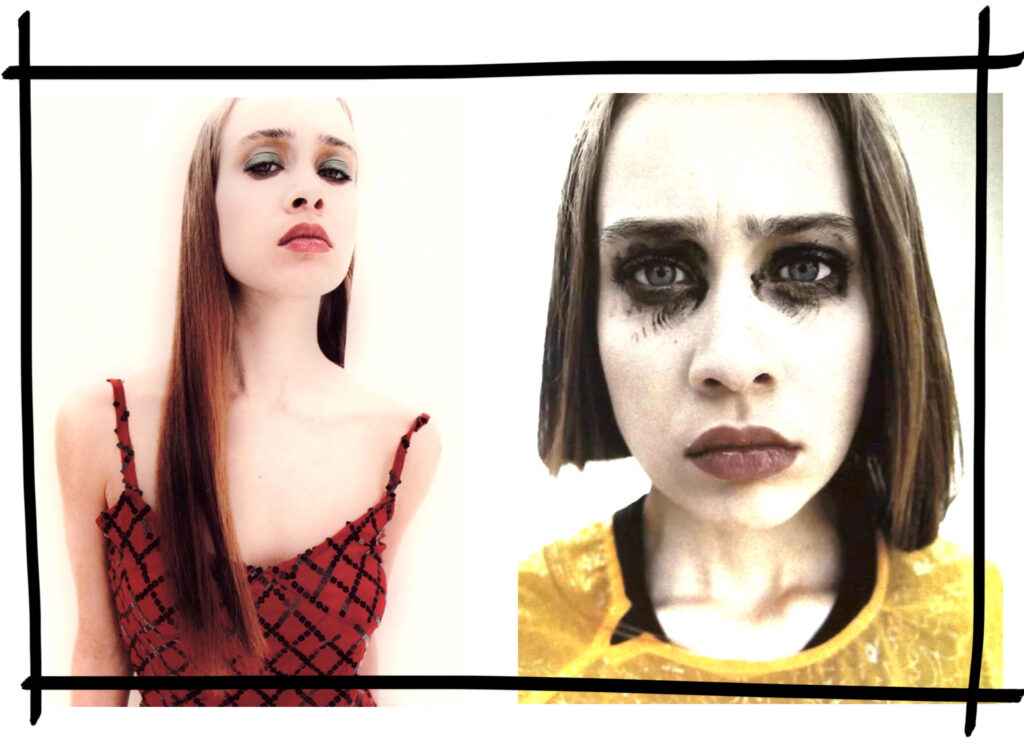
In Icon you report about a fleeting second meeting with David, while he was filming Basquiat on a NYC street. A kind of nostalgia and regret seems to be reflected by your words. Am I wrong?
Ok, you have to understand the background of the Icon text. I was interviewed because I had a hard time to write it myself, and the interviewer was really interested in me and if David and I became friends after the project. I said that we were so busy doing the work and so exhausted and empty after each day there was no social interactions. I added it would have been nice to become closer and maybe do some more projects later. Then I mentioned that when I saw him again, he was not himself but doing another character. That time he was Andy Warhol. So every time I meet David he was in character of someone else. So, I have no regrets at all.
Every photographer I interviewed – each one – has spent very fine and lovely words about David as a human being, as well as an artist. There is a great respect for his work and his persona. You did not know him very well, but what do you think about the fact that he is so idealised? In a way that seems to exceed the common and reasonable standards?
I don’t know how to answer that, he was a genius in many ways, and a very kind person. A curious and open minded man. Probably he realised that he needed people around him to present his ideas and understood that he could not do it himself, and still the face of his trademark, must been a huge pressure but seemed like he was made for it.

https://www.johnscarisbrick.com
All photos © John Scarisbrick, except polaroid © Davide De Angelis.
Interview conceived and realised by Matteo Tonolli, exclusively for David Bowie News. © 2021.
Edited by Nick Vernon.
Thanks to Eileen @ Isolar.